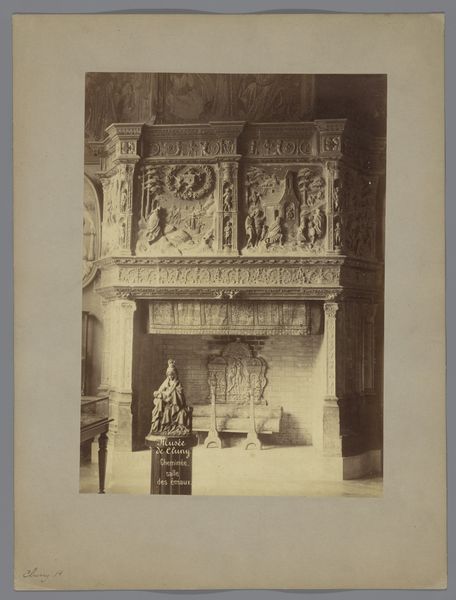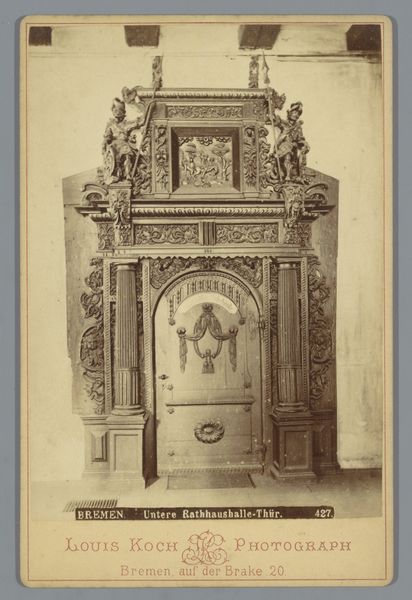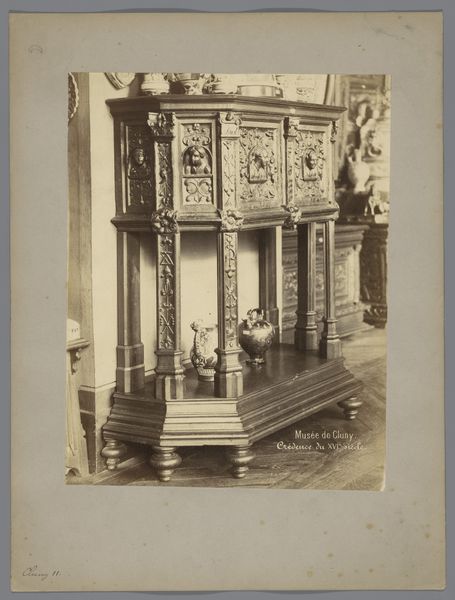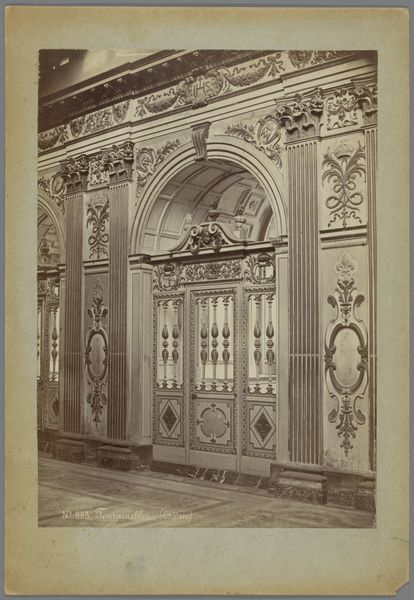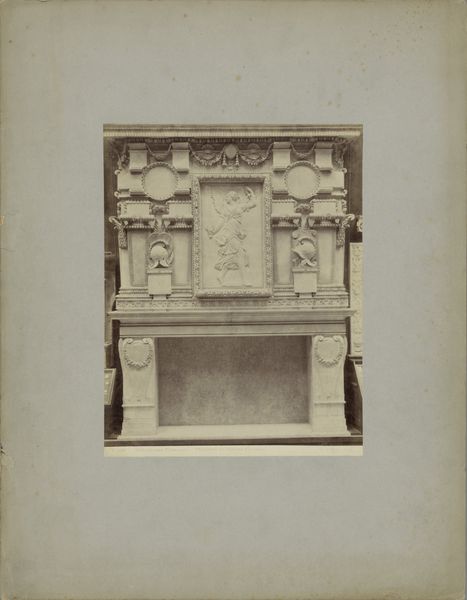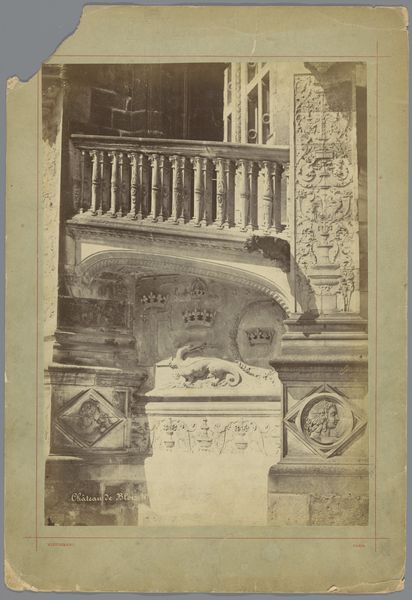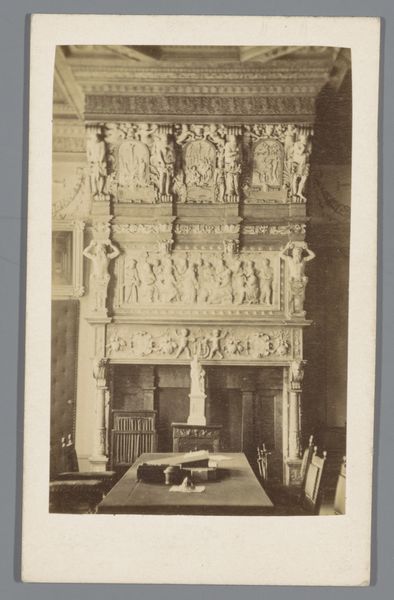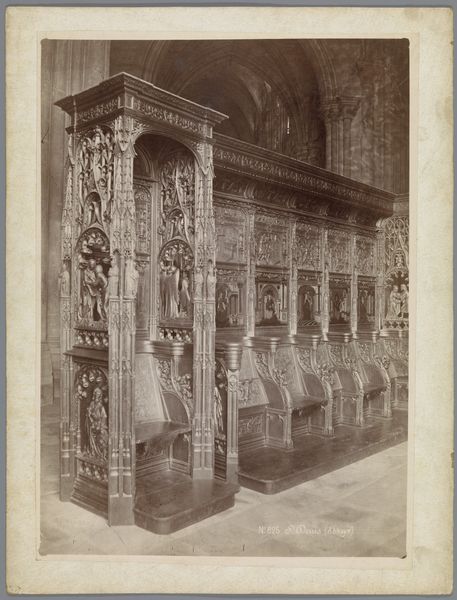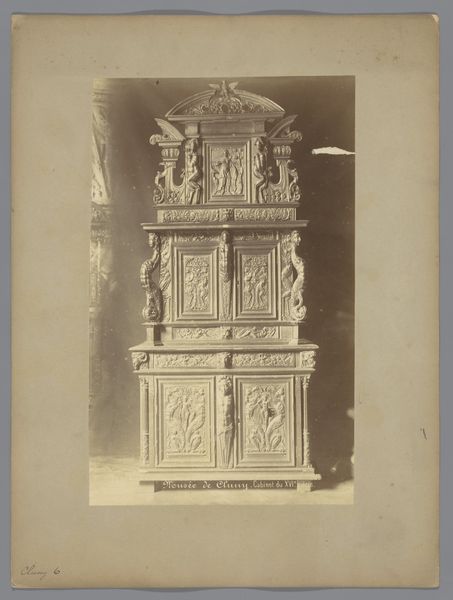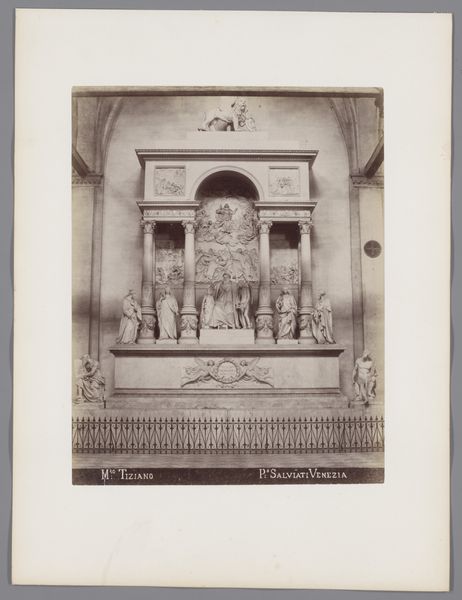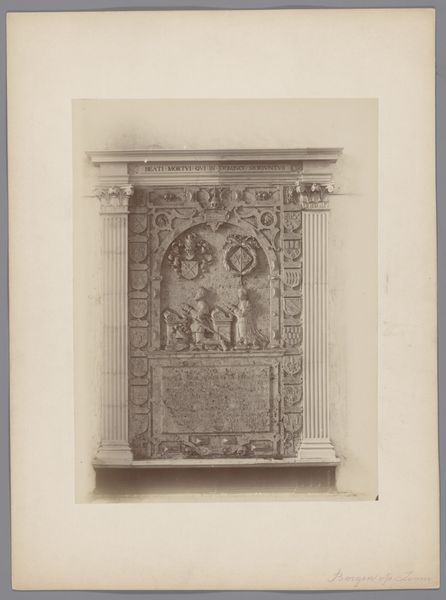
print, photography, wood, architecture
# print
#
11_renaissance
#
photography
#
wood
#
architecture
Dimensions: height 252 mm, width 200 mm, height 294 mm, width 232 mm
Copyright: Rijks Museum: Open Domain
Curator: Here we have a photograph of the choir stalls in the monastery church of Pavia. The image, titled “Koorbanken in de kloosterkerk van Pavia,” was taken sometime between 1864 and 1884 by Giacomo Brogi. Editor: My immediate thought is how meticulously rendered everything is, given that it’s a photograph and all of that detail, the wood carvings specifically, feels monumental and solid. There's such incredible texture here. Curator: Indeed. Consider the historical moment: photography was relatively new. Brogi’s work brings up crucial questions of representation, power, and how we perceive the past. Religious architecture often symbolizes the authority of the church but it also suggests ideas about exclusion, tradition and the relationship of church power structures and other forms of authority. Who were these stalls intended for? Who was excluded from that space and by what forces? Editor: I think looking at the actual construction adds to your point. The scale speaks to labor; think about the intensive craftsmanship required to produce these kinds of ornate designs, the social context in which laborers produced this object, what their relationships might have been, and how such things intersect with what the Church represents as an institution. It also leads me to wonder, how are images and the photographic process being put to use by the church? Curator: Right. This photograph serves not just as a representation but as a potential tool of evangelization, a document of cultural heritage, perhaps a silent sermon in its own right. Editor: Precisely. And Brogi, through his technique, is making deliberate choices. The composition and lighting—they all contribute to the dissemination of particular narratives, to what degree can it be objective, for instance? Curator: So much here prompts consideration of who controls these representations and for what purposes. Examining the work with intersectional lenses helps reveal layers of meaning. Editor: By considering both the tangible material—the wood, the photographic paper, and ink—alongside the photograph's circulation, we get a more nuanced grasp of its place in broader power structures. Thank you, it does all come to bear on my perception of these historical objects. Curator: Indeed, by understanding the forces that shape artworks, we deepen our comprehension not only of art history but of ourselves.
Comments
No comments
Be the first to comment and join the conversation on the ultimate creative platform.
